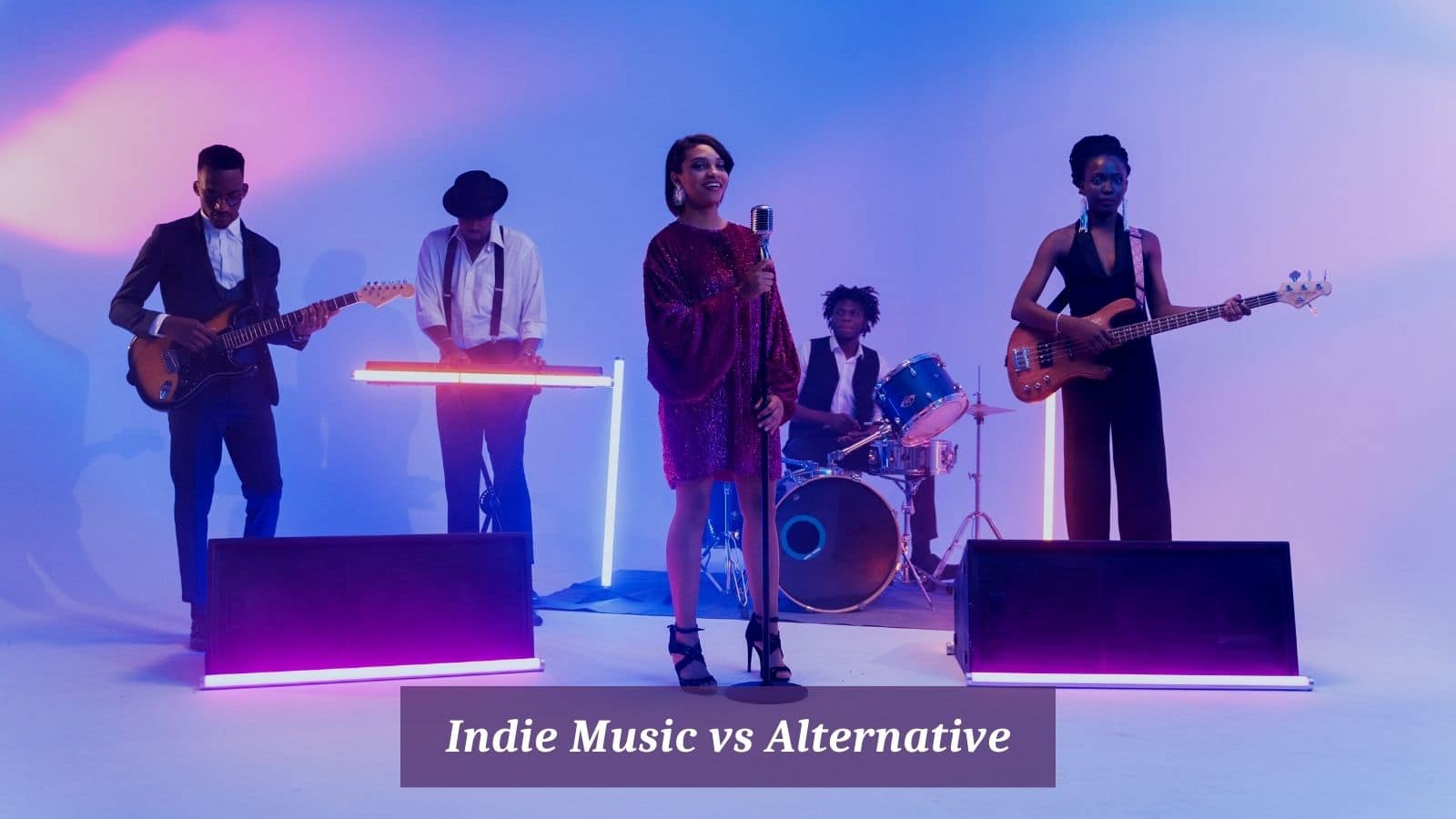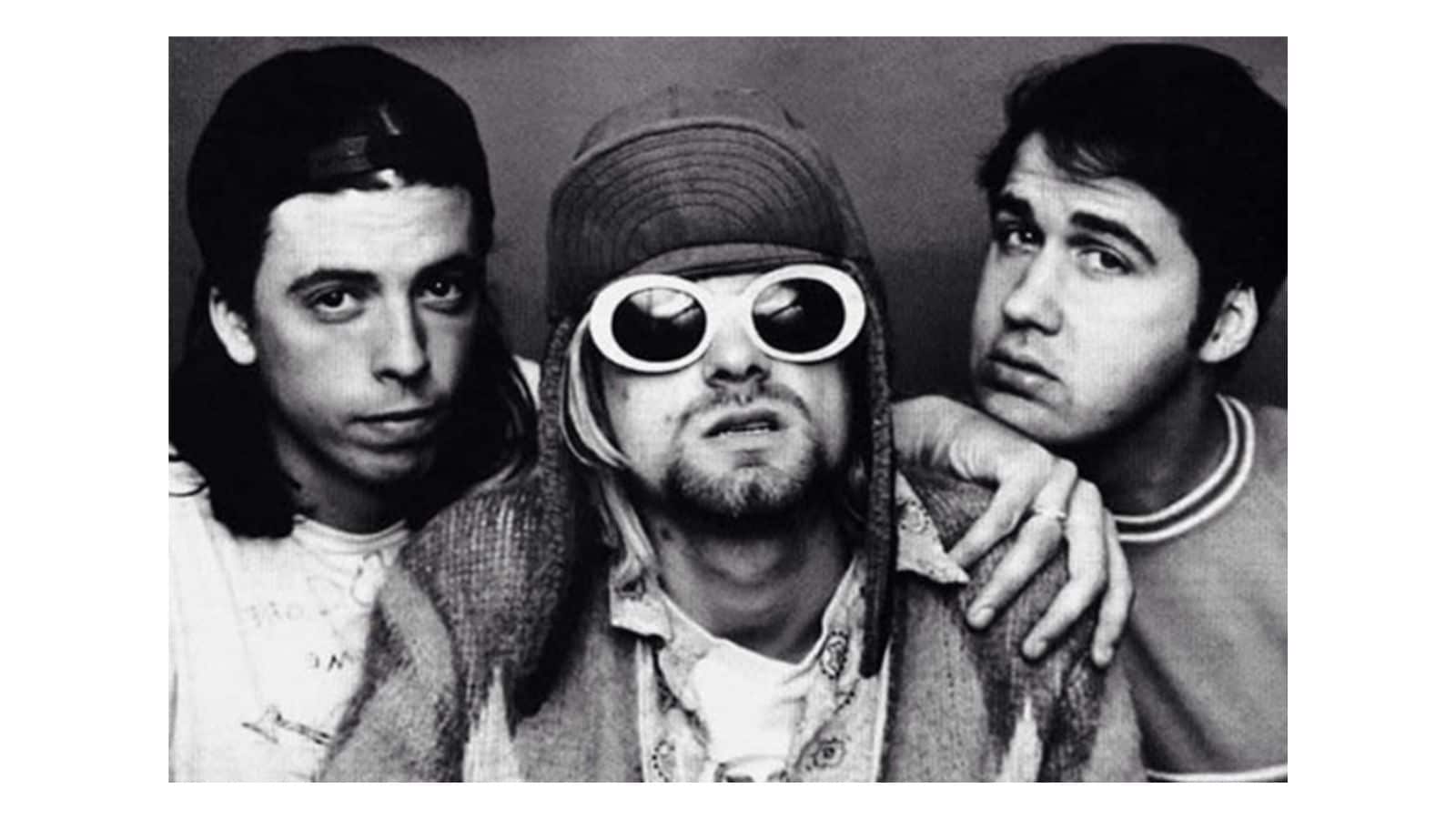
We could say that most indie music is alternative, but not all are indie. Let’s unpack this statement.
Many alternative rock bands in the 1980s signed with independent labels, but later moved to one of the Big Three. Those who stayed independent mostly and unfortunately disappeared from the scene.
Defining Indie Music and Alternative
Defining indie music and alternative is almost impossible because we could offer many definitions. On the grassroots level, indie music and alternative refer to a set of beliefs and ideas rather than a musical genre.
Indie was used in Great Britain, while America preferred the term alternative.
Indie Music
Indie music isn’t as much a music style or genre but rather more a production style. Artists are signed with an independent label when they are independent or indie. The Big Three, Sony Music Entertainment, Universal Music Group (includes EMI), and Warner Music Group are commercial labels.
Signing with an independent label means a group is not connected to the Big Three, and they aren’t connected to the group. Indie groups typically fund their own productions and don’t have the financial backing of a major record label.
Alternative: Rock
The best way to describe the alternative scene is perhaps to refer to it as music that existed and still exists outside the mainstream music scene. But this is also somewhat problematic.
Many alternative groups- pop and rock- started as independent or indie musicians but later signed with major labels, while others stayed proudly independent.
But, of course, there’s nothing wrong with signing with a major label because artists can reach a much wider audience and profit from their art because the label carries the financial stress.
The watershed was in 1991 when Nirvana crossed over and signed with a major label (RGC). Nirvana pioneered alternative rock and brought it to the mainstream audience’s attention and showed commercial labels alternative rock is also commercially viable.
Nirvana formed in 1987 and was part of the well-established Seattle grunge scene through their album Bleach. Their album Nevermind catapulted them into the mainstream. Punk isn’t dead, it paved the way for alternative rock and pop (or alt-pop), and still thrives today.
Before Nirvana’s breakthrough, the 1980s alternative rock scene was scattered across the scene and signed with independent (indie) labels and thus indie artists. =
As a result, there were numerous styles, such as post-hardcore punk, jangle-pop, funk-metal, punk-pop, and alternative dance, to name a few. All these splinter genres made it into the mainstream in some form or the other.
Alternative: Pop
Indie pop and alternative pop shared their roots with alternative rock and emerged in the 1990s from indie music and pop scenes.
The best definition we can provide for alternative pop is pop music that has a broad appeal in the mainstream but is produced by artists who can be considered ‘outsiders’ in the mainstream circle.
Although there aren’t many alt-pop bands who found success during the 19080s, Siouxsie and the Banshees are an exception.
In the late 1990s and early 2000s, alt-pop finally gained attention and traction in mainstream music. A notable example is that the Riot Grrrl movement paved the way for female artists during the 1990s, such as Alanis Morisette, later Avril Lavigne, and Billie Eilish.
Indie Music vs Alternative
You can learn more about indie music and alternative music in the summary below.
| Indie Music | Alternative | |
|---|---|---|
| Part of the Big Three? | No—they produce and fund their music from their finances | Yes or no—depends on the band: If yes, part of the Big Three If No, indie music |
| Who owns the rights? | Artists typically retain their rights | Big Three: contracts specify, but usually, the label Indie: see left column |
| Who finances the album? | Sometimes, some financial assistance from the label, but usually the artists themselves | Big Three: the label finances and monetizes the album Indie: see left column |
| Artistic control | The band stays in charge of their artistic processes | The label directs the creative flow in collaboration with the artists but usually has the last say. Nirvana is a prime example: after signing with RGC in 1991, their rough grunge edges were sanded down to become more commercially appealing. The same is true for other alternative bands that came after them |
| Where did it start? | Punk rock’s DIY ethos flourished in the 1970s leading to bands adopting this spirit, and it grew in stature and popularity. Indie became a trade term in the UK for records released on independent record labels; during the 1980s, the UK Indie Chart started tracking the best-selling, independent release singles in the 1980s. The C86 cassette tape (released by New Musical Express (NME) magazine and Punk’s DIY attitude can be seen as the beginning of the indie industry. The internet age allowed many genres into the world, including electronic music, nerd-core, vaporwave, drill rap, lo-fi music. Artists can upload and distribute their music without a label and remain completely independent. | Still Punk rock, but emerged in the 1980s and 1990s as post-punk bands. Alternative can be divided into rock and pop for the sake of conciseness. However, there is a myriad of genres in between. Alternative rock went by a few names but started in the 1970s, already in the independent music scene in the US. Terry Tolin used the term ‘alternative music’ to describe a rock group on the radio in 1979. |
Conclusion
While it is relatively easy to define indie music, putting a label on alternative is nearly impossible. Both movements stemmed from the DIY attitude of punk during the 1970s and grew throughout the 1980s.
Nirvana is seen as the watershed band that put alternative on the map. Before 1991, they could be classified as an indie band, but when they signed with RGC, they broke into the mainstream and put alternative rock on the map.
However, when they signed up with RGC, they sacrificed some of their independence to become commercially ‘acceptable.’ While there’s nothing wrong when an artist signs with one of the Big Three, they lose their freedom.
Ultimately, artists must decide what’s best for their careers, which sometimes requires sacrifice.
Further Reading
We highly recommend looking at this post and video, especially for more information on indie music and how to stay independent as an artist.
To learn more about the alternative scene, look here.

